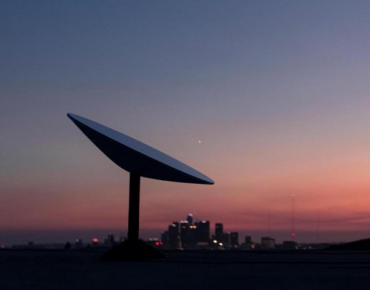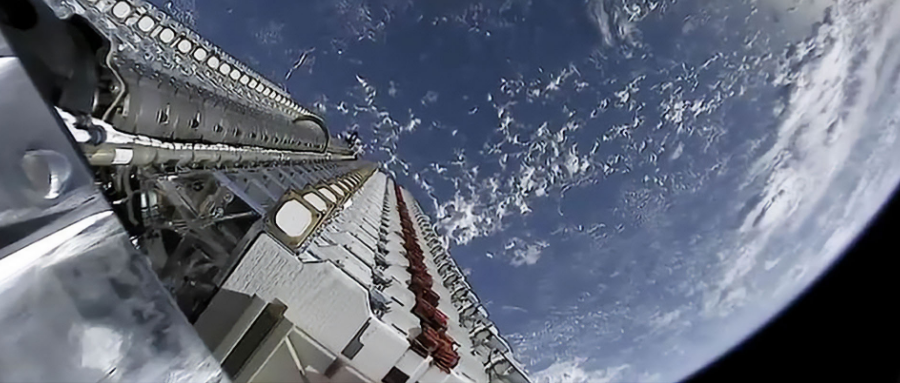Google Cloud Data Centers to Host Ground Stations for SpaceX’s Starlink Satellite Internet Services

As Elon Musk’s SpaceX continues to build out and test its beta Starlink high-speed, satellite-based internet services, Google Cloud has signed up as a partner to host ground stations within its data centers to link up with the fledgling satellite network.
The deal will highlight some of the expertise of both companies – from SpaceX’s successes in rockets and boosting satellites into Earth orbit to Google Cloud’s experience in cloud computing, data services and more – and combine them in an innovative approach to providing broadband internet services in rural and remote locations where such infrastructure is typically hard to come by. The satellite services will also enable businesses to get critical enterprise applications delivered wherever they are located.
Announced on May 13 (Thursday), the partnership aims to locate Starlink ground stations inside Google data center properties to provide connections to the internet using Google Cloud infrastructure.
“Organizations with broad footprints, like public sector agencies, businesses with presences at the network edge, or those operating in rural or remote areas, often require access to applications running in the cloud, or to cloud services like analytics, artificial intelligence, or machine learning,” Google said in a statement. “Connectivity from Starlink’s constellation of low-Earth-orbit satellites provides a path for these organizations to deliver data and applications to teams distributed across countries and continents, quickly and securely.”
Starlink, which was announced in 2015 and sent its first satellites into Earth orbit in May of 2019 as its satellite “constellation” was beginning to be assembled, is in beta and has been delivering high-speed, low-latency broadband to its first customers around the world, according to the company. The satellites are continuing to be placed into orbit and the service is expected to be in place with near global coverage by the end of 2021, according to Starlink.
So far, more than 1,500 Starlink satellites have been launched into orbit as part of the project and are bringing internet services to businesses and consumers in remote areas, according to Google.

An in-space photo of 60 stacked Starlink satellites orbiting Earth prior to deployment. Image courtesy of Starlink/SpaceX.
More than 500,000 people have ordered or placed a deposit for Starlink services, according to a story by CNBC. The deal between Google Cloud and SpaceX could be for as long as seven years, the story continued, and the first Starlink ground stations will only be added initially within Google cloud data centers in the U.S., with plans to expand internationally in the future.
Urs Hölzle, the senior vice president for infrastructure at Google Cloud, said in a statement that the partnership between the two companies will provide an option to businesses that presently have limited internet capabilities.
“Applications and services running in the cloud can be transformative for organizations, whether they’re operating in a highly networked or remote environment,” said Hölzle. “We are delighted to partner with SpaceX to ensure that organizations with distributed footprints have seamless, secure, and fast access to the critical applications and services they need to keep their teams up and running.”
The broadened Starlink services from the Google Cloud and SpaceX partnership are expected to be available to customers in the second half of 2021.
Two IT analysts told EnterpriseAI that the Google SpaceX Starlink deal is intriguing for several reasons.
“It’s an interesting combination of companies that should provide benefits for those using Google services and Starlink,” said Rob Enderle, principal analyst with Enderle Research. “Google’s links to other cloud services like Amazon Prime and Netflix should be relatively fast and low latency. This capability could improve overall performance for Starlink customers by removing what may not be bottlenecks in existing Starling base stations.”
Another analyst, Charles King, principal of Pund-IT, said the new partnership could mean the Starlink effort is building steam for real-world success.
“It suggests that Starlink is nearing a broader rollout than the current paid beta offering and could become commercially competitive with or ahead of similar low-orbiting satellite-enabled services, like OneWeb, Telesat and Amazon's Project Kuiper,” said King. “It's also a positive win for Google Cloud, and could lead to future opportunities for the company.”
On the other hand, there are potential pitfalls as well, both analysts said.
“Starlink is not uncontroversial,” said King. “There have been numerous complaints about the core technologies, including increasing light pollution and the potential for massively adding to potential space debris. And SpaceX has also been criticized by the National Rural Electric Cooperative Association (NRECA) for receiving $800 million in U.S. government funding from a program that is specifically designed to support Internet service provisioning in rural areas.”
King also said that it is unclear how well Starlink will deliver on the performance promises that SpaceX has claimed. “Satellite-enabled Internet services are often inconsistent, and are negatively impacted by everything from weather events to oversubscription,” he said. “If Starlink delivers what has been promised, that's all to the good. But there are many hurdles, some of them quite high, ahead.”
And there’s also the issue of Elon Musk himself, said analyst Enderle.
“Musk is not the easiest guy to get along with, and should this partnership fail; it might have a catastrophic impact on users if those Google-based ground stations are taking off-line over a dispute between the companies,” he said.
Starlink has been launching the satellites at a rate of about 60 at a time as it builds up its satellite constellation. On May 3, the latest batch of 60 Starlink satellites were lifted into orbit, according to a report by CNET.
Starlink satellites are located more than 60 times closer to Earth than traditional satellites, which allows them to have lower latency and the ability to support services typically not possible with traditional satellite internet, according to the company.
Because they are not tied to traditional cable or other Earthbound technologies for internet services, Starlink is seen as a workable alternative for rural and remote locations around the globe.
Both Google and SpaceX Starlink did not respond to questions from EnterpriseIAI by press time, but we’ll follow up if we get more details












